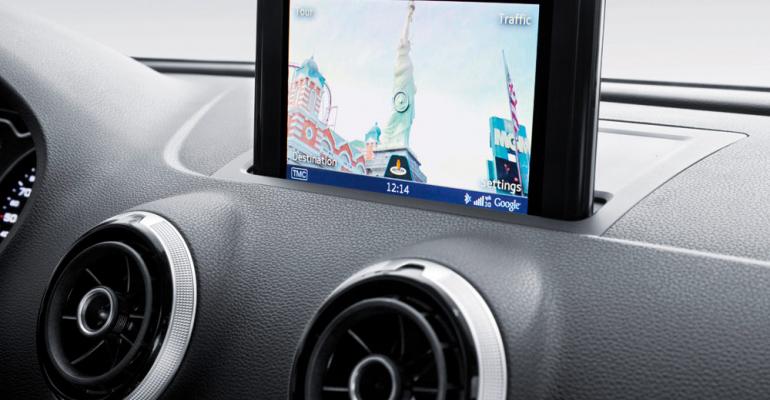FRANKFURT, Germany – The German government will offer the world a software package in January that promises to speed up development of automotive infotainment systems.
The automotiveHMI project brought suppliers such as Elektrobit, Robert Bosch and Porsche Engineering together with auto makers Audi, Daimler and Volkswagen and federal research groups including DFKI.
The idea was to devise a toolkit that would reduce the time it takes to develop the human machine interface, which puts controls for everything from the vehicle’s radio to advanced active-safety systems in front of the driver.
“The engineers specify what they want, and they don’t always speak the same language as the developers,” says Marius Orfgen of DFKI, the German research center for artificial intelligence. “These programs go through many iterations. We developed a formal machine-readable language, a sort of exchange format, that saves much time.”
For example, if a designer produces a screen in Photoshop, software developed in the automotiveHMI project can pull the design data from the image, such as the color, size in pixels and location, and deliver it to the developer.
Each auto maker has its own rules for the look and feel it wants to present on its infotainment screens, and one aspect of the automotiveHMI language allows the OEM to prepare a sort of algorithm rulebook for its style and run this package of constraints on the developer’s version of a screen to identify errors early.
“An integrated approach based on standardized exchange formats, models and interfaces will lead to an increased efficiency in automotive HMI-development,” the organization says on its automotiveHMI.org website.
Orfgen says using the system should result in better quality, faster development and lower costs. Because the language is common, any supplier will be able to develop software for any auto maker, much redundancy in training will be reduced and developers will be able to spend more time improving content.
Only German companies were invited by the German Federal Ministry of Economics and Technology to participate, Orfgen says, but the results of the 3-year, €7.4 million ($9.6 million) project will be offered to everyone.
“It will be uploaded to the Web at the end of the year,” he says. “All can use it for free.”





